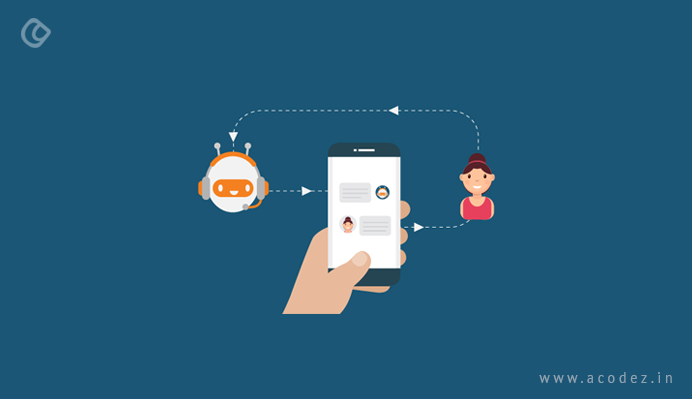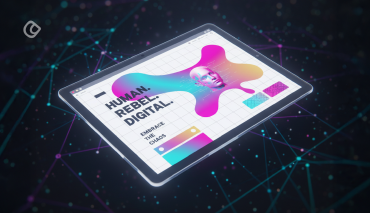Imagine that you reach home from work at exactly 7 pm every day; when you open the door; you’re greeted by the aroma of freshly brewed tea or coffee, and your favorite music playing in the background. Normally, this would be done by a caring and efficient partner, or hired help; but imagine if you could achieve the same results even if you were single – through connected machines? That’s where AI comes in. An electronic kettle, playlist on a smart device, and a mobile app can ensure you get all of this as you enter your home!
Artificial Intelligence or AI is slowly and surely, penetrating every aspect of our lives; today we have phones that talk to us, machine that can diagnose health conditions, apps that can recognize faces, and more. The popularity of AI stems from its ability to simplify mundane and complex tasks, helping machines to operate, judge and speculate in an almost human manner. This actually freed up human resources to tackle the areas which mandated the use of intelligence. For example, though we use computers for problem-solving, we still need human beings who can write the code to make those problems solving programs. Slowly, even these kinds of tasks may be accomplished by machines.
A Few Examples Of AI Enhancing UX
Often, AI is used so innocuously, that people don’t even realize that AI is behind the improved UX they just had. Online stores and even non-E-commerce sites have been using AI to study and understand the varying requirements of their users. AI algorithms can be developed to understand a specific situation and do a cognitive analysis to learn about user preferences and habits. The algorithm can be programmed to calculate the time spent on a page, the time taken to purchase and checkout, and to provide intelligent guesses for why the shopping cart was abandoned, the kind of news (sports, politics, finance, health etc.) the user is interested in, and so on.
Let’s take a look at a few examples of this:
Amazon

Based on your purchase history and past browsing, Amazon shows you products you’re most likely to like and buy now; it also displays similar or complementary products. Let’s suppose you looked for soap bases because you want to make soap at home. Once you’ve selected the base, the site will show you pictures of soap molds, essential oils that you may want to add in it and so on, under ‘Other customers who bought this soap base also bought…’. This makes it very convenient for the shoppers – a reason why Amazon is the world’s leading retailer online. They are now going to take it even further with anticipatory shipping. By combining machine learning and AI, this feature will ship products to customers as they need them – it could even be something simple like determining the closest physical location of the products so as to minimize shipping time once the customer does place the order.
Facebook
It no longer asks you what you want specifically to see. Based on your past history of liking, commenting and sharing, Facebook works out what kind of posts you are interested in, curates them for you, delivering your preferred content in your newsfeed. That is AI working in the background to tailor your experience of Facebook; it also shows you ads its algorithm determines will be relevant to you.
Air BnB

This popular site for holidaymakers who want a homely vacation accommodation and homeowners who want to make some extra cash has a tool called Price Tips. It tells the homeowner/host the price they should sell their rooms or homes for, every single day, to increase the chances of it getting rented. If the host prices it higher than the amount the tool has determined, the dates are displayed in red; the host can then adjust the price till the dates are displayed in green. The tool works out the lowest price the accommodation can be rented out at, without compromising on the host’s revenue.
Digital Voice Assistants
Popular personal digital assistants like Siri and Google can help users with activities like searching for information online, guiding navigation, to make calls or send messages, load applications, set event reminders and more. Major improvements in voice recognition technology and tracking user behavior have contributed to making voice assistants extremely popular.
Online Chatbots

Nearly every website has them now. The customers get the opportunity to contact the company at any time of their convenience and get a reply. The customer’s experience of interacting with the company is excellent. The company saves money they would have had to spend on hiring an employee for this purpose, AND their reputation goes up because they are able to provide round the clock customer support – it’s a win-win situation. Sometimes there is an actual person at the other end, but often, it’s AI. This is especially when it’s after hours for the company.
Amazon Fire Phone
This phone has a visual search app which provides a WOW user experience; it allows the user to take a photo of a product, and use it to look for that online. A hassle-free search experience, it has also made the whole process more enjoyable. Alibaba, the Chinese E-Commerce giant, is another organization that has begun image matching search for their clothing department. Here the users don’t have to know any names or keywords.
Netflix

This is another service that’s available on multiple devices like smart TVs, computers, tablets, and Smartphones. To cater to all of these media, designers would have had to dish up tons of variations in content and graphics. However, thanks to AI, they are spared this task; they created an algorithm that crop images to display specific characters and add stylized titles to display unique posters based on the user’s interests, location, language and so on. What’s more, it also tests the algorithm and checks how effective the design is, AND makes corrections to make it more appealing to the user = improved UX.
Artificial Journalism
You may wonder what’s this now? But AI has been used to produce simple news stories like sports briefs, financial shorts, and so on for quite a few years. Fox, Yahoo, and other companies have achieved this with a natural language generation engine called Wordsmith.
RealEyes

This emotion tracking firm uses AI to measure human emotion through webcam recordings. As human emotions are significantly responsible for purchasing this tool can be very valuable for product testing. The webcam records the user’s face, and the emotions flitting across the faces, especially in the eyes; if the user registers happiness it means the product is good, and if it registers boredom, annoyance etc. it means that some improvements are needed in the product, and so on. It can also be used for workflow automation through analysis of video data.
Conclusion
AI is definitely revolutionizing the way people use products and websites, and the way vendors and customers interact. Different kinds of devices and media are being included in its ambit. Already, AI is a huge part of our lives – we can only expect its role to increase in the coming days. AI works silently and unobtrusively in the background to deliver UX like you have never imagined. The sky is the limit!
Acodez is a leading UX design agency in India. We provide all kinds of web design and mobile application development solutions that are based on the latest technologies in the software industry. We also have an in-house digital marketing team based in India offering all kinds of digital marketing solutions to take your businesses to the next level.
Looking for a good team
for your next project?
Contact us and we'll give you a preliminary free consultation
on the web & mobile strategy that'd suit your needs best.










